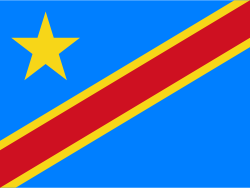Tragic Boat Fire in Congo Claims Lives and Leaves Hundreds Missing
 Congo, Democratic Republic
Congo, Democratic RepublicThe ambitious Grand Inga Dam project in the Democratic Republic of Congo (DRC) faces significant challenges as its long-awaited construction continues to stall. Proposed to be the world's largest hydroelectric plant, producing more electricity than China's Three Gorges Dam, the project aims to address the critical electricity shortages affecting 600 million people in sub-Saharan Africa.
Originally envisioned decades ago, the site has remained inactive despite the DRC government’s assurances that development is ongoing. Criticism from various stakeholders highlights delays, governance issues, and environmental risks associated with the mega-dam. Recent setbacks include the withdrawal of the Chinese state-owned Three Gorges Corporation, which has ended its backing due to frustrations with DRC President Félix Tshisekedi's management of the initiative.
The estimated cost of the Grand Inga is staggering, reportedly reaching $80 billion in one of Africa's poorest nations. Although discussions around the project have ramped up, lack of funding and investor confidence persists. The World Bank has re-entered talks after withdrawing support in 2016 but its past concerns about the project's feasibility remain relevant. Despite the DRC's potential as a leader in hydropower, delays in construction since the original target date of 2018 highlight deeper systemic issues within the country.
Although the DRC government has indicated plans for significant energy production by adding additional dams to the Congo River, the benefits of the Grand Inga may not fully reach local communities, with claims that much of the energy has been earmarked for export to countries like South Africa.
Environmental and social concerns add another layer of complexity, with risks of displacing local populations and affecting biodiversity in the region. Activists argue that the project may primarily serve foreign interests rather than solving the energy crisis for Congolese citizens.
As discussions continue, the future of the Grand Inga remains uncertain, leaving millions in Africa still waiting for reliable access to electricity.
 Congo, Democratic Republic
Congo, Democratic Republic Congo, Democratic Republic
Congo, Democratic Republic Congo, Democratic Republic
Congo, Democratic Republic